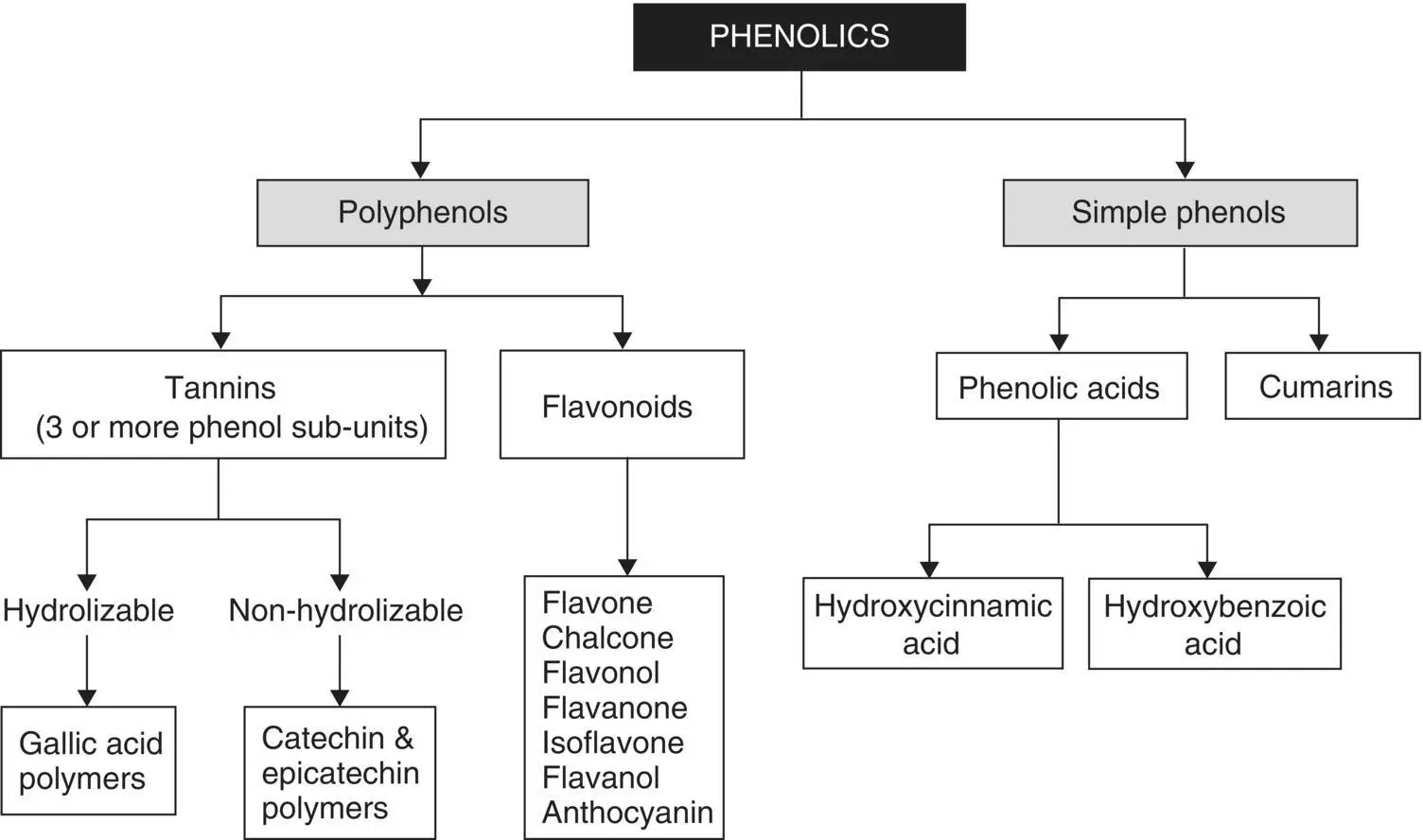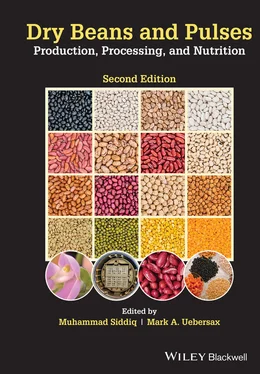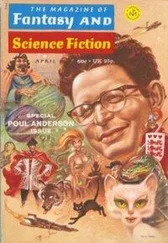Dry Beans and Pulses Production, Processing, and Nutrition
Здесь есть возможность читать онлайн «Dry Beans and Pulses Production, Processing, and Nutrition» — ознакомительный отрывок электронной книги совершенно бесплатно, а после прочтения отрывка купить полную версию. В некоторых случаях можно слушать аудио, скачать через торрент в формате fb2 и присутствует краткое содержание. Жанр: unrecognised, на английском языке. Описание произведения, (предисловие) а так же отзывы посетителей доступны на портале библиотеки ЛибКат.
- Название:Dry Beans and Pulses Production, Processing, and Nutrition
- Автор:
- Жанр:
- Год:неизвестен
- ISBN:нет данных
- Рейтинг книги:5 / 5. Голосов: 1
-
Избранное:Добавить в избранное
- Отзывы:
-
Ваша оценка:
- 100
- 1
- 2
- 3
- 4
- 5
Dry Beans and Pulses Production, Processing, and Nutrition: краткое содержание, описание и аннотация
Предлагаем к чтению аннотацию, описание, краткое содержание или предисловие (зависит от того, что написал сам автор книги «Dry Beans and Pulses Production, Processing, and Nutrition»). Если вы не нашли необходимую информацию о книге — напишите в комментариях, мы постараемся отыскать её.
The second edition of the most complete and authoritative reference on dry beans production, processing, and nutrition available Dry Beans and Pulses: Production, Processing, and Nutrition
Dry Beans and Pulses: Production, Processing, and Nutrition, Second Edition
Dry Beans and Pulses Production, Processing, and Nutrition — читать онлайн ознакомительный отрывок
Ниже представлен текст книги, разбитый по страницам. Система сохранения места последней прочитанной страницы, позволяет с удобством читать онлайн бесплатно книгу «Dry Beans and Pulses Production, Processing, and Nutrition», без необходимости каждый раз заново искать на чём Вы остановились. Поставьте закладку, и сможете в любой момент перейти на страницу, на которой закончили чтение.
Интервал:
Закладка:
SEED COAT PIGMENTATION AND COLOR
Commercial classes are also characterized by their seed coat color. Seed coat color is defined by the pigmentation underlying the testa and may be distributed throughout the testa as a solid or mottled pattern. The appearance will range from glossy (shiny) to a matte (dull) finish. The glossy finish is associated with the presence of a lipid layer on the surface of the testa. The P locus is known as the ground factor for all seed coat color genotypes (Bassett 2007).
Pigments found within the seed coat are typically phenolic compounds (e.g., phenolic acids, condensed polyphenols, or tannins and flavonoids, particularly anthocyanins) that impart a distinctive color and are reactive to soak water chemistry and pH (Singh et al. 2017). The general descriptive classification of phenolic compounds is presented in Figure 3.7 . This broad class of phenolic compounds influences the reactivity of various cross‐linking reactions between proteins and thus is associated with decreased water transmission rates and water‐holding capacity of the seed. These polyphenolic compounds, mainly tannins found in the seed coat, are present in black, red, and brown beans and produce desirable agronomic effects (abiotic stress tolerance and the prevention of in‐pod sprouting). Further, these compounds are potentially associated with a wide range of plant biochemical and metabolic functions including (1) resistance to disease, (2) wound‐healing response, and (3) insect and bird resistance.
However, the polyphenolic compounds (tannins) found in bean seed coats adversely impact nutritional bioavailability (Salunkhe et al. 1990; Hart et al. 2019; Rousseau et al. 2020). These compounds are reactive and will bind with soluble proteins and reduce their bioavailability and interfere with protein digestibility (Elias et al. 1979; Aw and Swanson 1985). Seed coat tannins leached into the soak and cook water are particularly important in subsistence feeding programs because of the detrimental effect they have on overall nutrient bioavailability. This negative impact is dramatic if the tannin‐rich bean broth is used as a component of weaning foods.

Fig. 3.7. General classification of phenolic compounds.
Source: Adapted from Luthria and Pastor‐Corrales (2006).
In recent years, interest in the antioxidant capacity of plant foods and specifically the phenolic content of dry beans (Wu et al. 2004; Xu and Chang 2009; Giusti et al. 2019) has intensified. There is increasing evidence that flavonoids consumed in native foods convey health benefits in human diets through their antioxidant activity (Frankel et al. 1993; Hertog et al. 1993). Condensed and hydrolyzable tannins of high molecular weight also have been shown to be effective antioxidants with even greater activity than simple phenolics (e.g., flavonoid monomers) (Hagerman et al. 1998). Although exceptionally high levels of antioxidant capacity have been reported in raw dry beans (Wu et al. 2004), further work on the retention of these properties in prepared (cooked or canned) beans is warranted.
The genetics of black bean pigmentation has been studied by various researchers and summarized by Hosfield (2001). Feenstra (1960) isolated 18 different compounds from 12 experimental lines. These pigment compounds were identified as anthocyanins, flavonol glycosides, and leucoanthocyanidins. The secondary plant metabolites known as flavonoids are water‐soluble phenolic compounds that possess the basic structural C15 skeleton of flavones. Beninger et al. (1998) reported that the pigments responsible for the wide variation in the color of bean seed coats are flavonoids.
Water‐soluble pigments are readily leached from the seed coat during hydration, blanching, and thermal processing. Retention of pigment is generally a desirable characteristic that imparts attractive appearance and appeal. Black beans are particularly susceptible to pigment leaching during soaking and preparation procedures. The use of extended high‐temperature hydration procedures (hot soaking, pipe blanching, or extended blanch conditions) generally renders black beans pale and opaque with a gray or chocolate brown “muddy” appearance. The leaching of pigment during soaking, blanching, and thermal processing is a major quality problem associated with all colored beans, particularly black beans. The primary anthocyanin pigments in black beans include: (1) delpinidin‐O‐gluscoside, (2) petunidin‐O‐glucoside, and (3) malvidin‐O‐glucoside. These phenolic glucosides are highly soluble in water, and excessive leaching may occur, resulting in beans with a flat brownish appearance (Bushey et al. 2000, Bushey and Hosfield 2007). The deposition of pigment in black beans is relatively late in the plant growth cycle and appears to be under genetic and environmental influence (Fletcher et al. 2003). Failure to achieve full maturity of seed may result in reduced or nonuniform pigmentation.
It is recognized that black beans possessing a shiny seed coat will imbibe less water and at a slower rate, resulting in less total pigment loss than beans with dull‐appearing seed coats. This characteristic is likely associated with polar‐phased (lipids/waxes) components deposited within the cuticle of the testa. For example, Shiny Crow , a distinctive black bean cultivar released by Colorado State University in 1999, possesses a brilliant glossy seed coat sheen and is particularly valued in the fresh market sector due to its deep black pigmentation. Black beans with the highest rates of water uptake were shown to have the highest rates of pigment loss ( Raven , Black Jack and Black Magic ) and had about 90% pigment loss compared to Shiny Crow and Shiny Harblack , with about 50% pigment loss. Thus, these data suggest that the opaque (dull) seed coat has the highest water uptake (rate and total quantity) and the greatest pigment loss compared to shiny‐coated cultivars (Bushey et al. 2000, Bushey and Hosfield 2007).
Several soak‐water additives have demonstrated the ability to stabilize pigment leaching and/or oxidization. Citric acid, poly phosphates, and ethylene‐diamine‐tetra‐acetic acid (EDTA) are commonly used to improve pigment appearance. Pigment stabilization mechanisms likely include the chelation of iron and copper to control oxidative reactions that result in loss of distinctive pigmentation/color.
USDA STANDARDS FOR COMMON BEANS AND SELECTED PULSES
USDA grade specifications are useful for communicating quality characteristics and serve as guidelines for purchase, especially in international commerce (export or import with the United States). However, many purchasers and end users often establish internal criteria (standards and tolerances derived through practical experience) that meet their individual quality needs.
The USDA standards for dry beans/legumes are shown in Table 3.3 . The USDA uses the following terminology for establishing grades of beans (USDA 2017a):
Sound beans: Sound beans shall be beans that are free from defects.
Defects: Defects for the classes baby lima and miscellaneous lima beans shall be damaged beans, contrasting classes, and foreign material. Defects for all other classes of beans shall be splits, damaged beans, contrasting classes, and foreign material.
Splits: Splits shall be pieces of beans that are not damaged, each of which consists of three‐fourths or less of the whole bean and shall include any sound bean the halves of which are held together loosely. Table 3.3. United States standards for selected classes of dry beans/pulses (% maximum limits).Source: adapted from USDA (2017a).Dry bean classesTotal defects (total damaged, foreign material, contrasting classes, splits)Total damaged (“badly damaged” for Navy)Total foreign material (including stones)Foreign material (stones only)Contrasting classesClasses that blendUS #1US #2US #3US #1US #2US #3US #1US #2US #3US #1US #2US #3US #1US #2US #3US #1US #2US #3Pinto3.05.07.03.05.07.00.51.01.50.20.40.60.51.02.05.010.015Navy (Pea beans) 1 2.03.01.5/3.02.03.00.3/0.30.40.80.1/0.10.20.40.1/0.10.51.00.1/0.14.04.02.0/2.0Black, kidney, small red, pink, great northern, small white2.04.06.02.04.06.00.51.01.50.20.40.60.51.02.05.010.015.0Cranberry, black‐eye/ cowpea, yellow‐eye 2 4.06.08.02.04.06.00.51.01.50.20.40.60.51.02.05.010.015.0Mung bean 3 2.04.06.02.04.06.00.51.01.50.20.40.60.51.02.05.010.015.0 1 Navy beans have two additional grades: “US Choice Handpicked” and “US Prime Handpicked,” for which data are shown under “US #3,” respectively. 2 Yellow‐eye beans have an additional criterion for classes that blend: white beans similar in size and shape at 5% each for “US #1 & #2” and unspecified for “US #3.” 3 Mung beans have an additional criterion: “Clean‐cut Weevil Bored” – 0.1, 0.2, and 0.5% for “US #1, #2, and #3,” respectively.
Читать дальшеИнтервал:
Закладка:
Похожие книги на «Dry Beans and Pulses Production, Processing, and Nutrition»
Представляем Вашему вниманию похожие книги на «Dry Beans and Pulses Production, Processing, and Nutrition» списком для выбора. Мы отобрали схожую по названию и смыслу литературу в надежде предоставить читателям больше вариантов отыскать новые, интересные, ещё непрочитанные произведения.
Обсуждение, отзывы о книге «Dry Beans and Pulses Production, Processing, and Nutrition» и просто собственные мнения читателей. Оставьте ваши комментарии, напишите, что Вы думаете о произведении, его смысле или главных героях. Укажите что конкретно понравилось, а что нет, и почему Вы так считаете.












